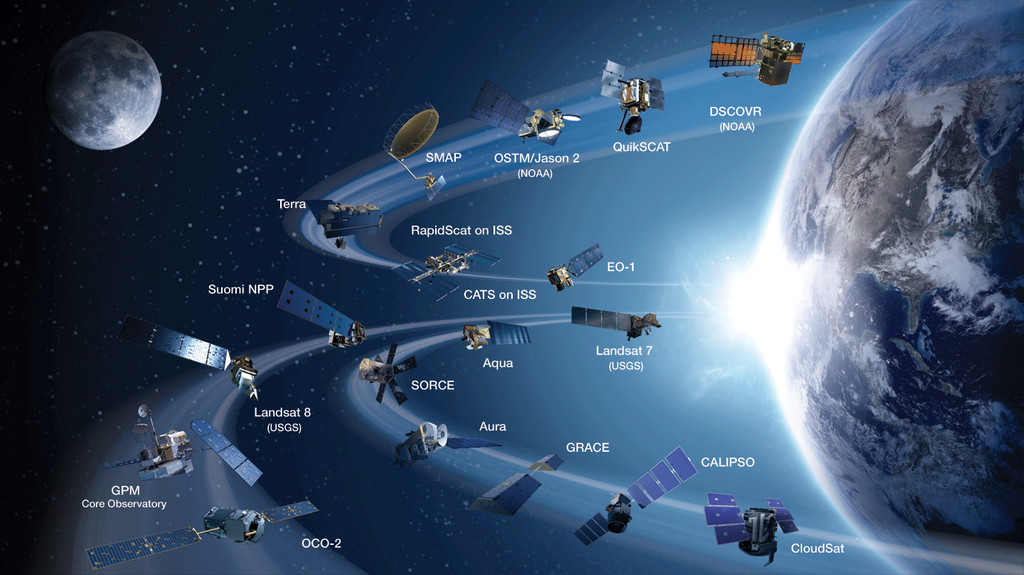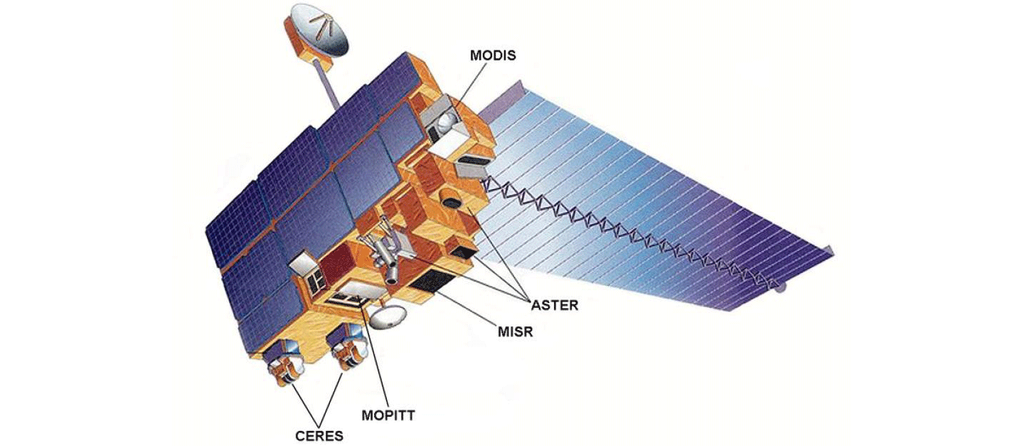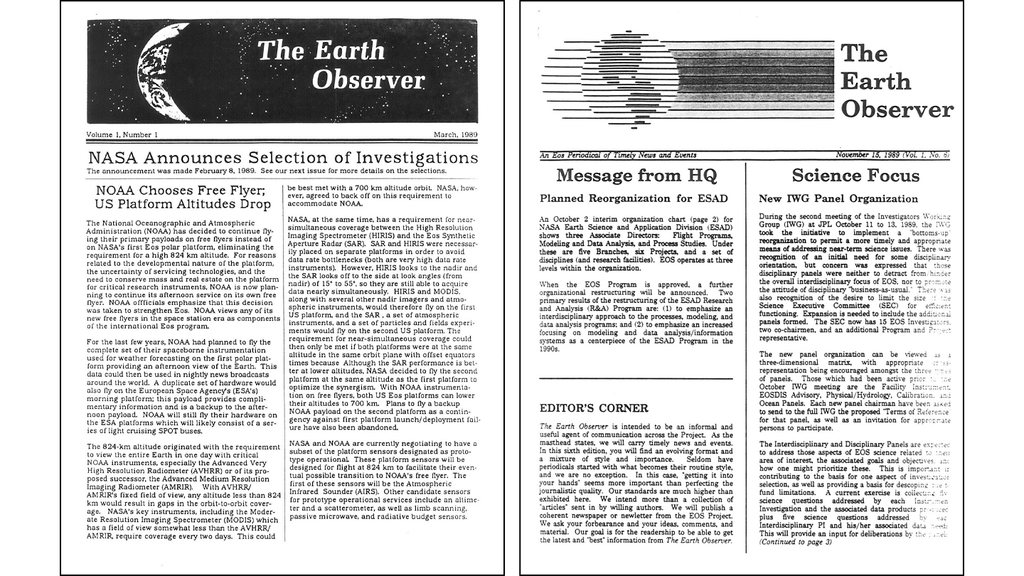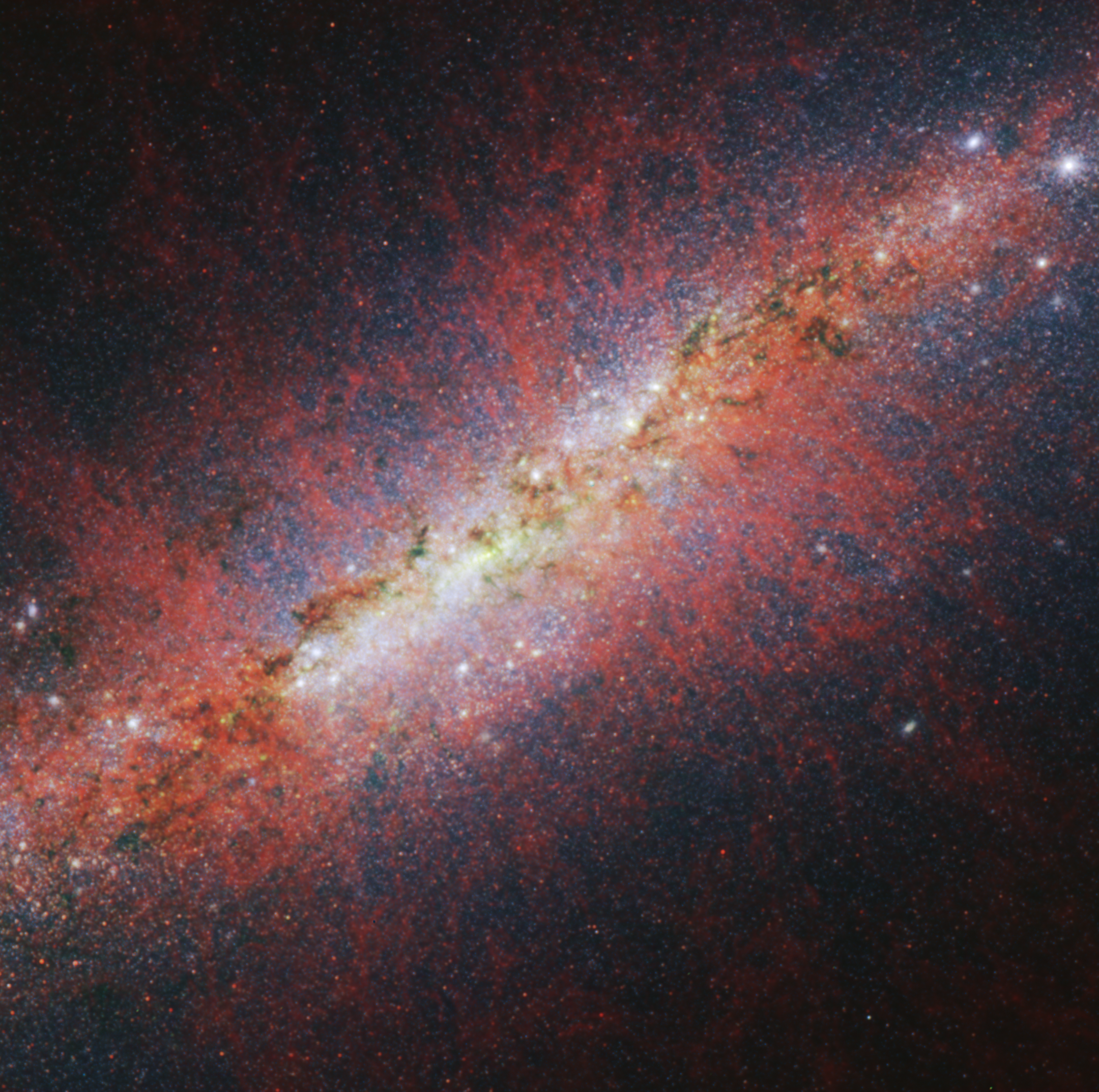1 min read
M82 (Hubble and Webb)
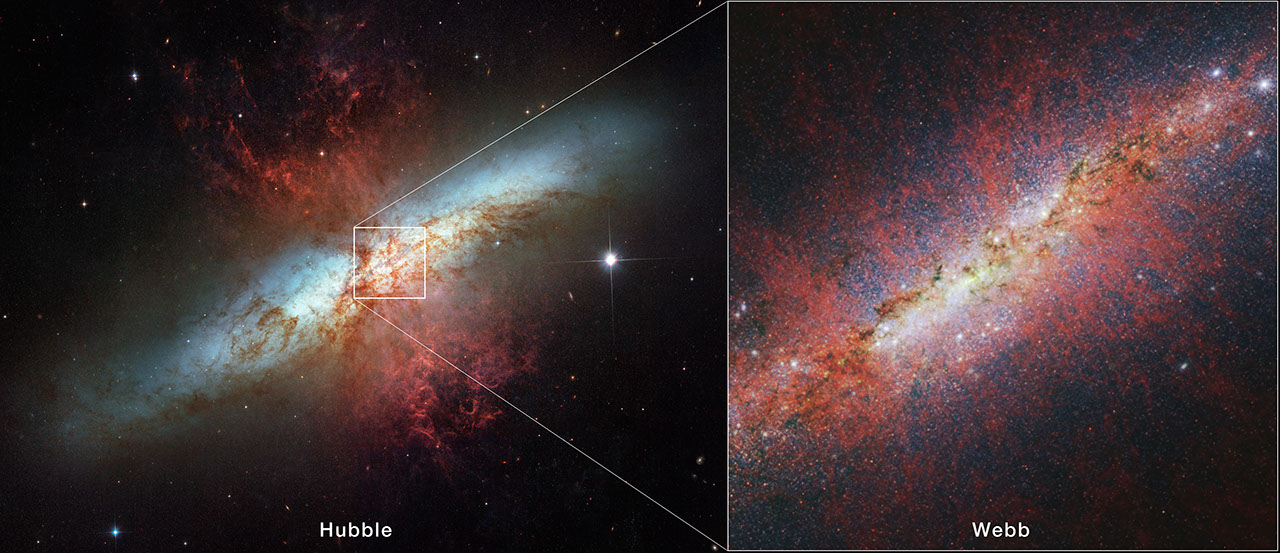
Starburst galaxy M82 was observed by the Hubble Space Telescope in 2006, which showed the galaxy’s edge-on spiral disk, shredded clouds, and hot hydrogen gas. The James Webb Space Telescope has observed M82’s core, capturing in unprecedented detail the structure of the galactic wind and characterizing individual stars and star clusters.
The Webb image is from the telescope’s NIRCam (Near-Infrared Camera) instrument. The red filaments trace the shape of the cool component of the galactic wind via polycyclic aromatic hydrocarbons (PAHs). PAHs are very small dust grains that survive in cooler temperatures but are destroyed in hot conditions. The structure of the emission is similar to that of the ionized gas, suggesting PAHs may be replenished from cooler molecular material as it is ionized.
About the Object
- R.A. PositionR.A. PositionRight ascension – analogous to longitude – is one component of an object's position.09:55:52.0
- Dec. PositionDec. PositionDeclination – analogous to latitude – is one component of an object's position.69:40:48.99
- ConstellationConstellationOne of 88 recognized regions of the celestial sphere in which the object appears.Ursa Major
- DistanceDistanceThe physical distance from Earth to the astronomical object. Distances within our solar system are usually measured in Astronomical Units (AU). Distances between stars are usually measured in light-years. Interstellar distances can also be measured in parsecs.12 million light-years (3.7 Megaparsecs)
About the Data
- Data DescriptionData DescriptionProposal: A description of the observations, their scientific justification, and the links to the data available in the science archive.
Science Team: The astronomers who planned the observations and analyzed the data. "PI" refers to the Principal Investigator.Left Image: This image was created from HST data from proposal 10776 M. Mountain (STScI), J. Gallagher (University of Wisconsin-Madison), P. Puxley (NSF), K. Noll, H. Bond, C. Christian, L. Frattare, F. Hamilton, Z. Levay, M. Mutchler, W. Januszewski, and T. Royle (Hubble Heritage Team/STScI/AURA)
Right Image: This image was created with Webb data from proposal: 1701 (M. Marin). Image processing: Alyssa Pagan (STScI).
- InstrumentInstrumentThe science instrument used to produce the data.HST>ACS/WFCJWST>NIRCam
- Exposure DatesExposure DatesThe date(s) that the telescope made its observations and the total exposure time.27-29 March 2006, 5 Janurary 2024
- FiltersFiltersThe camera filters that were used in the science observations.HST> F435W, F555W, F658N, F814WJWST> F164N, F250W, F335M
- Object NameObject NameA name or catalog number that astronomers use to identify an astronomical object.M82, NGC 3034
- Object DescriptionObject DescriptionThe type of astronomical object.Starburst Galaxy
- Release DateApril 3, 2024
- Science ReleaseNASA’s Webb Probes an Extreme Starburst Galaxy
- CreditImage: NASA, ESA, CSA, STScI, Alberto Bolatto (UMD)

Left Image: This image is a composite of many separate exposures made by the ACS instrument on the Hubble Space Telescope using several different filters. Three filters sample broad wavelength ranges, one isolates the light of hydrogen. The color results from assigning different hues (colors) to each monochromatic image. In this case, the assigned colors are: Blue: F435W, Green: F555W, Red-orange: F658N Red: F814W Right Image: This image is a composite of separate exposures acquired by the James Webb Space Telescope using the NIRCam instrument. Several filters were used to sample varying wavelength ranges. The color results from assigning different hues (colors) to each monochromatic (grayscale) image associated with an individual filter. In this case, the assigned colors are: Blue: F164N, Green: F250W, Red: F335M

Related Images & Videos

M82 (Hubble and Webb Compass Image)
Annotated image of the starburst galaxy Messier 82 captured by Webb's NIRCam (Near-Infrared Camera) instrument, with compass arrows, a scale bar, and color key for reference. The north and east compass arrows show the orientation of the image on the sky. Note that the...
Share
Details
Laura Betz
NASA’s Goddard Space Flight Center
Greenbelt, Maryland
laura.e.betz@nasa.gov
NASA, ESA, CSA, STScI, Alberto Bolatto (UMD)














